Pour to rich
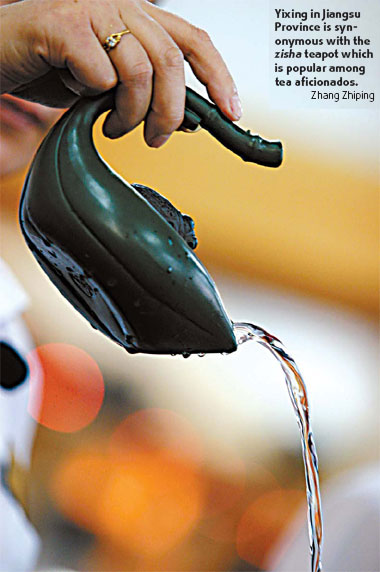
Ah, the charm of a small city! There are many cities this size in China, but many are nondescript and do not possess distinctive features. Yixing, in East China's Jiangsu Province, suffers from the opposite headache: It has so many resources it can use to promote tourism and it is sometimes at a loss what to highlight.
For most Chinese, Yixing is synonymous with zisha teapots, the dark brown, unglazed and small-sized ware popular among tea aficionados. "Zisha" literally means "purple clay", which is the raw material for the namesake pottery and is available only in the Yixing vicinity.
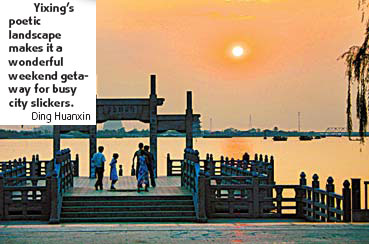
You don't have to like tea to enjoy Yixing, though, and you don't have to splurge thousands of yuan on a pot to pour tea from. As a matter of fact, zisha teapots have evolved from mainly functional to predominantly decorative or even artistic, and the really unique ones have become collector's items and indeed are pricey.
A walk down the main street in Dingshu, a small town in the southern suburb of Yixing, is like a journey into a zisha pottery paradise. There are 1,000-plus workshops in this "capital of pottery", employing some 30,000 people. Here, pottery-making goes back 7,000 years and the current kind of zisha ware first appeared in the Song Dynasty (960-1279).
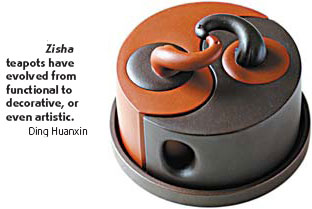
It is all made possible by the special zisha clay endowed by Mother Nature. "You can imitate our craftsmanship, but you cannot reproduce the clay," says one zisha maker. The preparation of the clay and the sculpting has remained the same throughout centuries, but there is only one kiln still in working condition.
Called "dragon kiln", it goes up a slope, with evenly placed holes on both sides of a hump, that resemble the scales of a dragon. However, kilns require special firewood and can be polluting. They have been replaced by electric stoves, which make it easier to control the temperature and yield better-quality ware, and lessen the burden on labor and the environment.
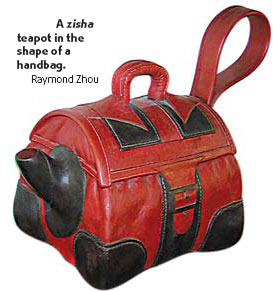
Teapots go with tea, and Yixing tea is a hidden secret. It is around here that Lu Yu (AD 733-804) of the Tang Dynasty (AD 618-907) wrote his Tea Bible. Yet, a statue of Lu stands forlornly by the roadside, in front of a vast rolling meadow of tea shrubbery.
"Though accounting for 40 percent of tea production in Jiangsu Province, Yixing tea does not figure prominently in the local economy," says a guide.
Even when you totally ignore the tea and teapot, Yixing is a wonderful weekend getaway for busy city slickers. It is situated on the northwest side of Taihu Lake, roughly at the center of a radius that links Nanjing, Wuxi, Suzhou, of Jiangsu Province, Shanghai, and Hangzhou of Zhejiang Province, one of the economic hotspots in the nation.
According to the Chinese, water adds sparkle to a place. In addition to being upstream of the famous lake, Yixing has three expanses of water so unique that a special word was coined to describe it. "Jiu" refers to something smaller than a lake but larger than a river.
A 4.5-sq-km jiu has been turned into the diamond of a downtown park. Residents stroll around the meticulously landscaped gardens, exquisite pavilions and across a dozen singularly shaped bridges. And at night buildings along the lake are tastefully lit, exuding an aura of fairyland.
This is not the only mammoth urban park. The other two lagoons are also being developed. The 5.5-sq-km Dragon Ridge Forest Park offers a perfect combination of natural habitat, multiple museums and a playground, with a newly rebuilt 108m pagoda to boot.
As the old saying goes, kind people prefer mountains and wise ones adore water. Yixing has both. Its mountains are covered with bamboo forests and conceal caves of rock formations. Shanjuan, the best known of the 80-something caves, has cavernous halls which look like a giant movie set.
It is rare for a place of 2,000 sq km and 1 million people, including suburbs, to have so much delight for both residents and visitors. The capital of pottery, the town on waterways, home to southern elegance, the birthplace of thousands of the nation's top educators Above all, it offers poetic tranquility tucked away, yet so close to the boisterous boomtowns of the Yangtze River Delta.
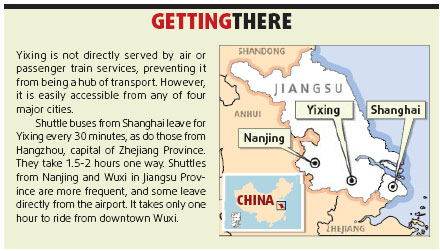
(China Daily 11/20/2007 page19)














